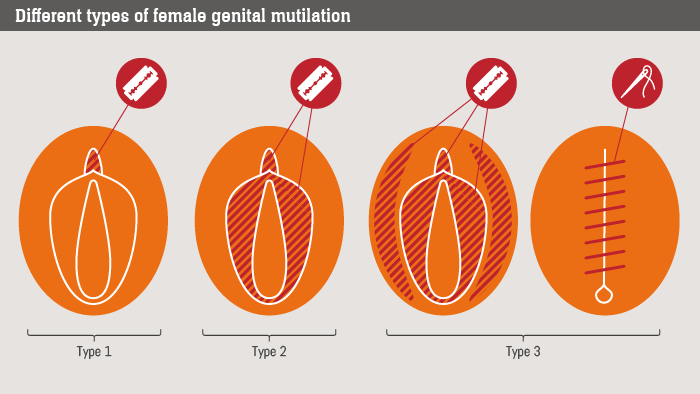Female Genital Mutilation is a practice that has been ingrained in various cultures for centuries and one that does not have a close end date. At least not until we address the myths surrounding the practice and take the knowledge off social media and to the streets, where it happens. Female Genital Mutilation (FGM) has been gaining much attention nowadays; with NGOs cropping up daily and social media trends. In this first instalment of a two-part series on the myths and facts surrounding Female Genital Mutilation, I will walk you through the meaning, modes of practice, cultural and social factors that influence the practice, and the myths about FGM.

Article Content
Meaning of Female Genital Mutilation
The World Health Organisation describes Female Genital Mutilation as including all procedures, the aim of which is to alter the female genitalia for non-medical reasons. It usually includes partial or total removal of the external female genitalia, covering of the vaginal opening, or such other injuries to the female genital organs for non-medical purposes.
Female genital mutilation is a violation of the fundamental rights to freedom from cruel, inhuman, or degrading treatment, freedom from discrimination, and the right to health, security, and physical integrity as covered by the Constitution of the Federal Republic of Nigeria 1999 and international instruments such as the African Charter on Human and Peoples’ Rights and the Universal Declaration of Human Rights.
Female Genital Mutilation Procedures

Photo Credit: http://www.endfgm.eu
The procedures are classified into four major types:
- Clitoridectomy: This is the partial or total removal of the clitoris, and in very rare cases, only the skin surrounding it (known as the prepuce).
- Excision: This is the partial or total removal of the clitoris and the labia minora, with or without the excision of the labia majora.
- Infibulation: This is also known as the pharaonic type. The procedure involves narrowing the vaginal orifice through the creation of a covering seal by repositioning the labia minora and/or the labia majora. The procedure is done through stitching or holding the injured areas together for an extended period. A small opening is left for urine and menstrual blood to escape. It may or may not include clitoridectomy. This procedure can, however, be reversed through surgery or penetrative sexual intercourse.
- Type 4 includes all other alterations and injuries caused to the female genitalia for non-medical purposes. These include pulling, pricking, piercing, incising, scraping, and cauterisation.
Cultural and Social Factors that Influence Female Genital Mutilation
There are many cultural and social factors cited as having a tremendous influence on the practice of Female Genital Mutilation. They include:
- In many societies, FGM is seen as necessary to facilitate the growth and development of girls and to prepare them for adulthood and marriage
- It is believed that FGM increases marriageability
- Many cultures that support FGM see it as a way to curb extramarital affairs in women and promote premarital virginity.
- There is the notion that girls can only be considered clean and beautiful after the removal of certain “unclean” parts.
Myths About Female Genital Mutilation
Various false beliefs keep the practice of Female Genital Mutilation going. These range from somewhat reasonable to the most (and I cannot stress this enough) bizarre things I have ever come across. They include:
- When the clitoris touches a baby’s head, especially a male child, the child dies. It’s just…
- FGM protects men from death during intercourse. To paraphrase the lady in a video I watched, ‘men dying during or immediately after sex is no more rampant because we have started cutting girls again.’ In case you were wondering, the video killed me.
- FGM is safer when carried out by a medical professional. There is no safe way to perform FGM procedures; it can lead to physical, sexual and mental health issues no matter who performs
- FGM is a religious obligation. My reaction: please show me the passage of the Bible, Koran or other sacred book. I know I have never seen anything supporting FGM in my Bible. Many religious bodies have come out condemning the practice.
- FGM can improve fertility. In practice, it’s the exact opposite of this.
Read Also: Tanzanian Governor, Paul Makonda Is Proposing A National Database Of Married Men To Protect Single Women

[…] Last week we covered the meaning, procedures, societal and cultural influencers, and myths of Female Genital Mutilation (FGM); in this instalment, I’m going to talk about facts. I’ll answer the questions “where?” “who” and “how many?” the physiological and psychological effects of Female Genital Mutilation, treatment, and why it’s a feminist issue. Let’s begin. […]